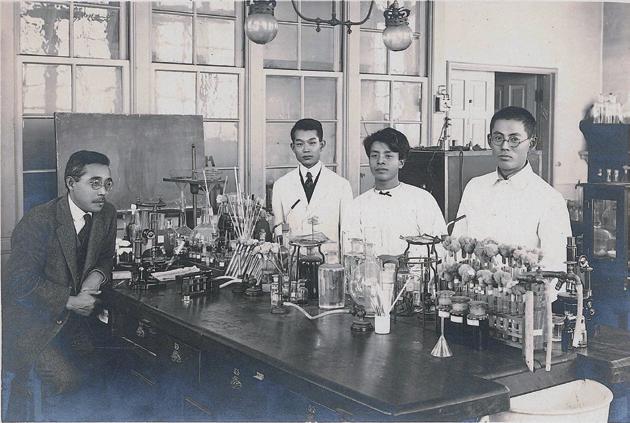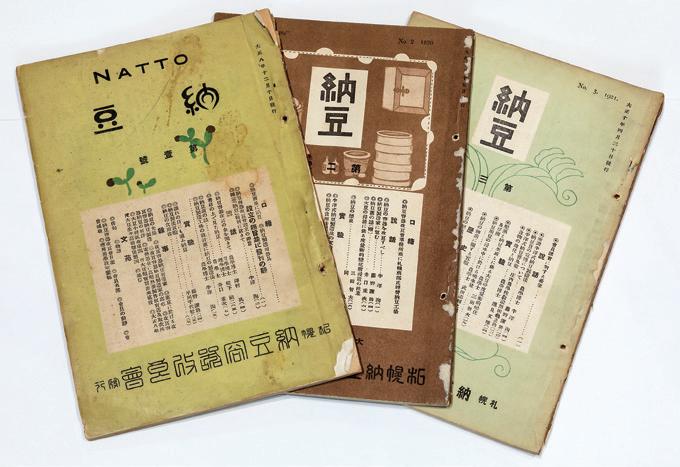
1 minute read
Natto bacteria ‒ a result of the spirit of practical learning
Natto is now recognized as an excellent fermented food produced in Japan, but until the Meiji era (1868 – 1912), it was considered an unstable product because its production relied on natural fermentation by natto bacteria attached to rice straws, mixed with other miscellaneous bacteria.

Jun Hanzawa
Hokkaido University Archives
Professor Hanzawa devised a manufacturing method that mixes purely cultured natto bacteria with boiled soybeans, and ferment them in a thinly cut wooden container. This container also had a bactericidal effect, was inexpensive, hygienic, and lightweight, making it convenient to manufacture and sell.

Professor Hanzawa in the laboratory (far left)
Hokkaido University Archives
In 1918, he introduced this new manufacturing method as the “Hanzawa-style improved natto manufacturing method.” It set a precedent for today’s biotechnology. He also established a company that sold the developed natto bacteria to secure operating funds for the newly opened laboratory, being a pioneer of today’s venture businesses. The following year, Professor Hanzawa published the magazine Natto, to disseminate the method, which formed the foundation of the present day natto manufacturing.

Covers of the magazine, Natto (first, second, and third issues from the left)
Hokkaido University Archives






